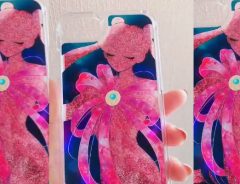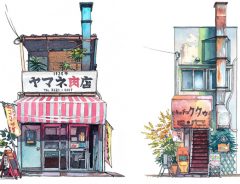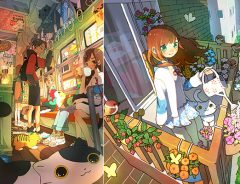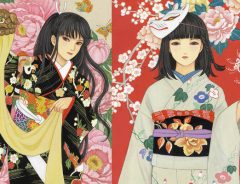- Source:
- © JAPAN Forward
- Tags:
- Art / Bikan / El Greco / Kurashiki / Ohara Museum of Art / Okayama Prefecture
Related Article
-

Japan’s Fallen Leaf Art Is Keeping Autumn’s Beauty Alive And Surprisingly Cute
-

Fan Artist Creates Hypnotizing Glitter Sailor Moon Phone Case Inspired By Transformation Sequence
-

Nostalgic Watercolors Reveal Stores Located Inside Tokyo’s Old Buildings
-

Happy Cats, Coffee Shops and Carefree Times in TAO’s Cheerful and Nostalgic Illustrations
-

Japanese hobbyist can repel mosquitoes in style with his “armillary sphere” artwork
-

Artist Celebrates Japanese Art and Culture With Strong and Beautiful Women Illustrations



John Carroll for JAPAN Forward
It is a somewhat curious experience walking through the streets of the Bikan old merchant district in Kurashiki, the second largest city in Okayama Prefecture.
Surrounded by black-and-white storehouses and other buildings dating back to the Tokugawa and early Meiji periods, you get the feeling of having just hopped off a time machine. But that in itself is not so unusual, since several Japanese towns have sought to recreate the past in order to attract the tourist yen.
Never Bombed, Historic Buildings Are Originals
What sets Kurashiki apart is that many of the buildings you see are not reproductions — they are the actual buildings of the past, although they have of course been renovated.
Kurashiki largely escaped the fire bombings of World War II that leveled nearly all of Japan’s cities, even though it was home to several plants producing war material. Although no one knows for sure why it was so fortunate, one widely accepted story involves El Greco and a prodigal native son-turned-cultural benefactor.
Kurashiki flourished during the Edo era, for most of that period as part of the tenryo or territory directly administered by the Tokugawa Shogunate. Its location near the Inland Sea made it a transport hub for many kinds of products, including rice and sugar, carried to and fro via canals. After the Meiji Restoration it became a major textile production center.
© JAPAN Forward
Stucco-finished machiya townhouses with black tile roofs and white-walled kura-zukuri storehouses sprang up along the Kurashiki River and its vicinity, stringing out along a line at the foot of low-lying hills on top of which is perched 1,700-year-old Achi Shrine. Many of these machiya with their unique Kurashiki-style latticework have been converted into guest houses.
The area has the feel of China’s Jiangnan region, an area rich in the natural beauty of water, greenery, and bright skies, with a cultured population. The prevailing mood is laidback, even a bit sleepy.
The primarily black-and-white colors of the houses and businesses in Bikan and the adjoining Honmachi/Higashimachi artisan district create an aesthetically pleasing and far-from-stark atmosphere, making them collectively perhaps the most picturesque merchant quarter in all of Japan.
Local residents still live in these buildings, although businesses of all kinds — ranging from art galleries, dance studios, tea shops. and even izakaya and jazz coffee shops — front the streets.
Ohara Museum of Art
All of this is, however, merely an appetizer. The main dish of any trip to the Bikan district is a visit to the Ohara Museum of Art, easily recognizable by its Parthenon-inspired facade.
© JAPAN Forward
Facing the willow-lined Bikan Canal, this — Japan’s oldest museum of modern art — houses an astonishing collection, including works by Renoir, Gauguin, Modigliani, Picasso, Degas, Rodin, Munch, Miro, Chagall, Jackson Pollock, Andy Warhol…the list goes on.
I found especially intriguing, and disturbing, the gigantic religious oil painting, All Things Die, But All Will Be Resurrected through God’s Love by Belgian artist Leon Frederic (1983-1918), which took 25 years to complete.
The Asian Gallery houses some beautiful Buddhist sculptures from the Northern Wei Dynasty as well as Silk Road pieces in the Gandara style.
Another collection devoted to the mingei folk art movement contains some interesting works by Soetsu Yanagi and Bernard Leach, among others.
Be sure to take a close look at Monet’s Water Lilies. Then go outside the main building to view the pond filled with water lilies sent from the original site that inspired the painting in France.
(...)
Written by Japan ForwardThe continuation of this article can be read on the "Japan Forward" site.
Find 500 Years of History in Okayama’s Picturesque Kurashiki